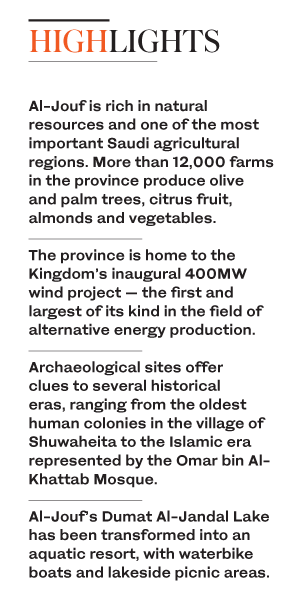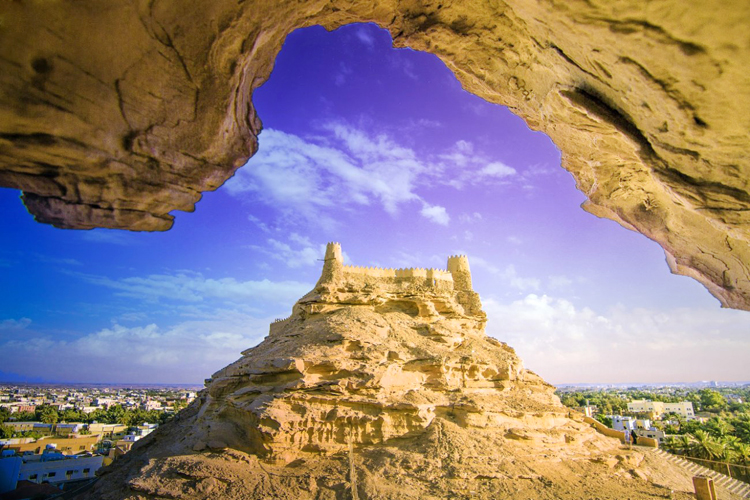JEDDAH: Saudi Arabia’s King Salman inaugurated 242 development projects worth SR10 billion ($2.6 billion) in the northern Al-Jouf province, the Saudi Press Agency (SPA) reported.
A total of 21 projects will be implemented by the Ministry of Health, 77 by the Ministry of Municipality, and 15 by the Ministry of Environment, Water and Agriculture, in addition to other investments in the energy, industrial and mining sectors.
Another 11 projects are owned by the Ministry of Housing, 82 by the Ministry of Education and 22 by the Ministry of Transport, the report added.
The king arrived in the Al-Jouf region on Tuesday night, where he was received by Crown Prince Mohammed bin Salman, Interior Minister Prince Abdul Aziz bin Saud bin Naif, Cultural Minister Prince Badr bin Abdullah bin Mohammed bin Farhan, and Al-Jouf Gov. Prince Badr bin Sultan bin Abdul Aziz.
The king also inaugurated and laid the foundation stone for several development projects in the region in a ceremony attended by the crown prince.
King Salman also launched 20 road projects worth SR628 million, including completion works on some roads, addition of lanes to other roads, and construction of secondary roads and junctions on existing roads.
The projects implemented by the Ministry of Transport will increase the roads’ lifespan and performance, and boost the efficiency of transport infrastructure as part of an upgrade of traffic safety under the Kingdom’s Vision 2030.
King Salman also inaugurated a number of water and sanitation projects, and laid the foundation of the Directorate-General of Water Services building in Al-Jouf, worth SR839 million.
The king also laid the foundation of water projects that include expanding water networks and tanks, linking villages with water lines, and building a water tank in Sakakah at a cost of SR139 million.
He laid also the foundation of the seventh phase of the sewer expansion project in Sakakah at a cost of SR79 million.
The king also pardoned prisoners in the region jailed on financial charges. The order applies to those with debts of SR1 million or less, who are not involved in criminal cases. In addition, the government will pay off the debts of those who have been proven to be unable to repay them.

Al-Jouf’s varied terrain and archaeological sites, such as Zaabal Castle and Omar bin Al-Khattab Mosque, are among the highlights for tourists. (SPA)
On Thursday, the king will launch Waad Al-Shamaal, a new city aimed at boosting the country’s mining infrastructure, the SPA reported.
He will lay the foundation stone for the first phase of the SR85 billion city in Toriaf province — worth SR55 billion — and is also set to inaugurate the projects and facilities of the second phase, worth SR30 billion.
In the past two months, the king has visited a number of major cities, announcing projects and initiatives to develop the Kingdom in line with Vision 2030, a broad strategic plan to diversify the Kingdom’s economy and end its dependence on oil revenues.
Before arriving in Al-Jouf, King Salman visited Tabuk, where several projects worth more than SR11 billion were launched.
He also met the team heading Amaala, the ultra-luxury tourist destination that was unveiled in September and dubbed the “Riviera of the Middle East,” and was briefed on plans for the new attraction.
King Salman praised Amaala’s objectives to contribute to promoting economic diversification, creating investment opportunities for the private sector, and developing the tourism sector in Saudi Arabia while preserving the cultural and environmental heritage.
On Tuesday, the crown prince also chaired a briefing on the combat readiness of various military sectors in the north. During his visit at King Faisal Air Base in the region, he received the families of security men and soldiers who had sacrificed their lives defending the country.












































